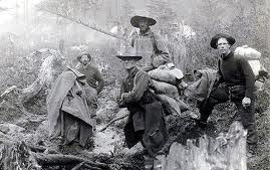The discovery of gold piece in the Sacramento Valley in early 1848 sparked the Gold Rush, debatably one of the most important events to shape American history through the first half of the 19th century. On January 24, 1848, James Wilson Marshall, a carpenter initially from New Jersey, establishes crumble of gold in the American River at the base of the Sierra Nevada Mountains close to Coloma, California.
At the time, Marshall was operational to build a water-powered sawmill possess by John Sutter, a German-born Swiss citizen and originator of a dependency of Nueva Helvetia (New Switzerland). Just days after Marshall's detection at Sutter's Mill, the agreement of Guadalupe Hidalgo was symbol, conclusion the Mexican-American War and send-off California in the hands of the United States.
At the time, the inhabitants of the province consisted of 6,500 California’s (people of Spanish or Mexican decent); 700 outsider (primarily Americans); and 150,000 Native Americans (hardly half the number that had been there when Spanish colonizer arrived in 1769).
News Spreads:
Though Marshall and Sutter tried to keep news of the detection under squashing, word got out, and by mid-March at slightest one newspaper was coverage that huge amount of gold were being twisted up at Sutter's Mill.
Though the preliminary response in San Francisco was incredulity, storekeeper Sam Brannan set off frenzy when he procession during town displaying a vial of gold acquire from Sutter's Creek.
By the end of the year, the non-native populace of California was predictable at 100,000, (as compared with 20,000 at the end of 1848 and around 800 in March 1848). To contain the needs of the '49ers, gold removal towns had pounce up all over the district, absolute with shops, saloons, brothels and other commerce in quest of to make their own Gold Rush destiny.
